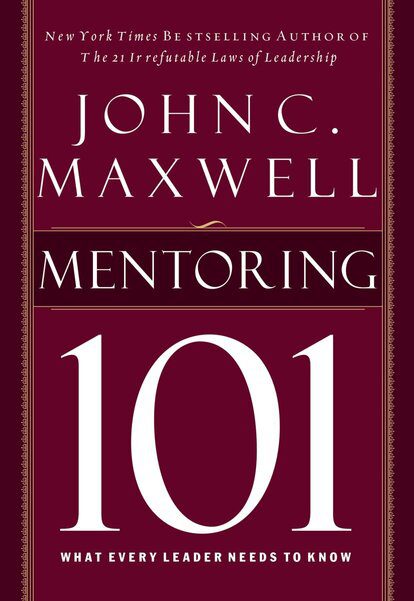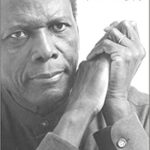In Mentoring 101: What Every Leader Needs to Know, Leadership author John C. Maxwell shares insights and strategies for building leaders by mentoring – what it is, why you should do it, and how you can do it most effectively.
The Mentoring Process
- I do it. First I learn to do the job. I have to understand the why as well as the how, and I try to perfect my craft.
- I do it—and you watch. I demonstrate it while you observe, and during the process, I explain what I’m doing and why.
- You do it—and I watch. As soon as possible, we exchange roles. I give you permission and authority to take over the job, but I stay with you to offer advice, correction, and encouragement.
- You do it. Once you’re proficient, I step back and let you work alone. The learner is drawn up to a higher level. And as soon as he is on that higher level, the teacher is free to move on to higher things.
Common obstacles created by mentors for potential leaders:
- Lack of clear direction: Many times a potential leader gets mentored and learns how to do a job, then he is left adrift, without any direction from his leader.
- Bureaucracy: Or she learns how her leader works and thinks, and then she is put into a bureaucratic system that stifles the innovative spirit that the mentor just engendered.
- Isolation: Everyone needs a community of people with whom to share and from whom to draw support. Often if the mentor doesn’t provide it, the new leader won’t have it.
- Busywork: Work with no perceived value demoralizes and demotivates people.
- Poor or dishonest communication: An agenda that isn’t communicated honestly to the person being developed hinders the relationship and confuses the potential leader.
SEE THEM AS WHO THEY CAN BECOME
Look for the great potential that is within each person you lead. When you find it, do your best to draw it out. Some leaders are so insecure that when they see a potential all-star, they try to push that person down because they worry that his or her high performance will make them look bad. But successful leaders reach down to lift those people up. They recognize that people with huge potential are going to be successful anyway. The best role they can assume is that of discoverer and encourager. In that way, they add value to them and get to be a positive part of the process of their emergence as leaders.
THE FIVE-STEP PROCESS OF TRAINING PEOPLE
- Step 1: I model. The process begins with my doing the tasks while the person being trained watches. When I do this, I try to give the person an opportunity to see me go through the whole process. Too often when leaders train, they begin in the middle of the task and confuse the people they’re trying to teach. When people see the task performed correctly and completely, it gives them something to try to duplicate.
- Step 2: I mentor. During this next step, I continue to perform the task, but this time the person I’m training comes alongside me and assists in the process. I also take time to explain not only the how but also the why of each step.
- Step 3: I monitor. We exchange places this time. The trainee performs the task, and I assist and correct. It’s especially important during this phase to be positive and encouraging to the trainee. It keeps him trying, and it makes him want to improve rather than give up. Work with him until he develops consistency. Once he’s gotten down the process, ask him to explain it to you. It will help him to understand and remember.
- Step 4: I motivate. I take myself out of the task at this point and let the trainee go. My task is to make sure he knows how to do it without help and to keep encouraging him so he will continue to improve. It is important for me to stay with him until he senses success. It’s a great motivator. At this time the trainee may want to make improvements to the process. Encourage him to do it, and at the same time learn from him.
- Step 5: I multiply. This is my favorite part of the whole process. Once the new leaders do the job well, it becomes their turn to teach others how to do it. As teachers know, the best way to learn something is to teach it. And the beauty of this is it frees me to do other important developmental tasks while others carry on the training.
TRUST
People will not follow a leader they do not trust. It is the leader’s responsibility to actively develop that trust in him from the people around him. Trust is built on many things:
- Time. Take time to listen and give feedback on performance.
- Respect. Give the potential leader respect, and he will return it with trust.
- Unconditional Positive Regard. Show acceptance of the person.
- Sensitivity. Anticipate the feelings and needs of the potential leader.
- Touch. Give encouragement—a handshake, high five, or pat on the back.
Once people trust their leader as a person, they become able to trust his leadership.
EXHIBIT CONSISTENCY
Consistency is a crucial part of developing potential leaders. When we are consistent, our people learn to trust us. They are able to grow and develop because they know what to expect from us. They can answer the question, “What would my leader do in this situation?” when they face difficult decisions. They become secure because they know what our response to them will be, regardless of circumstances.
LEAD EVERYONE DIFFERENTLY
One of the mistakes rookie leaders often make is that they try to lead everyone the same way. But let’s face it. Everyone doesn’t respond to the same kind of leadership. You should try to be consistent with everyone. You should treat everyone with kindness and respect. But don’t expect to use the same strategies and methods with everyone.
You have to figure out what leadership buttons to push with each individual person on your team. One person will respond well to being challenged; another will want to be nurtured. One will need the game plan drawn up for him; another will be more passionate if she can create the game plan herself. One will require consistent, frequent follow-up; another will want breathing room.
If you desire to be a successful person, you need to take responsibility for conforming your leadership style to what your people need, not expecting them to adapt to you.
For Longterm Success
Long Term Success
- A Goal: Find a need or function within the organization that would bring value to the organization.
- A Strength: Find an individual on your team with a strength that needs developing that will help achieve that organizational goal.
- An Opportunity: Provide the time, money, and resources the individual needs to achieve the goal.
All the Best in your quest to get Better. Don’t Settle: Live with Passion



Comments are closed.